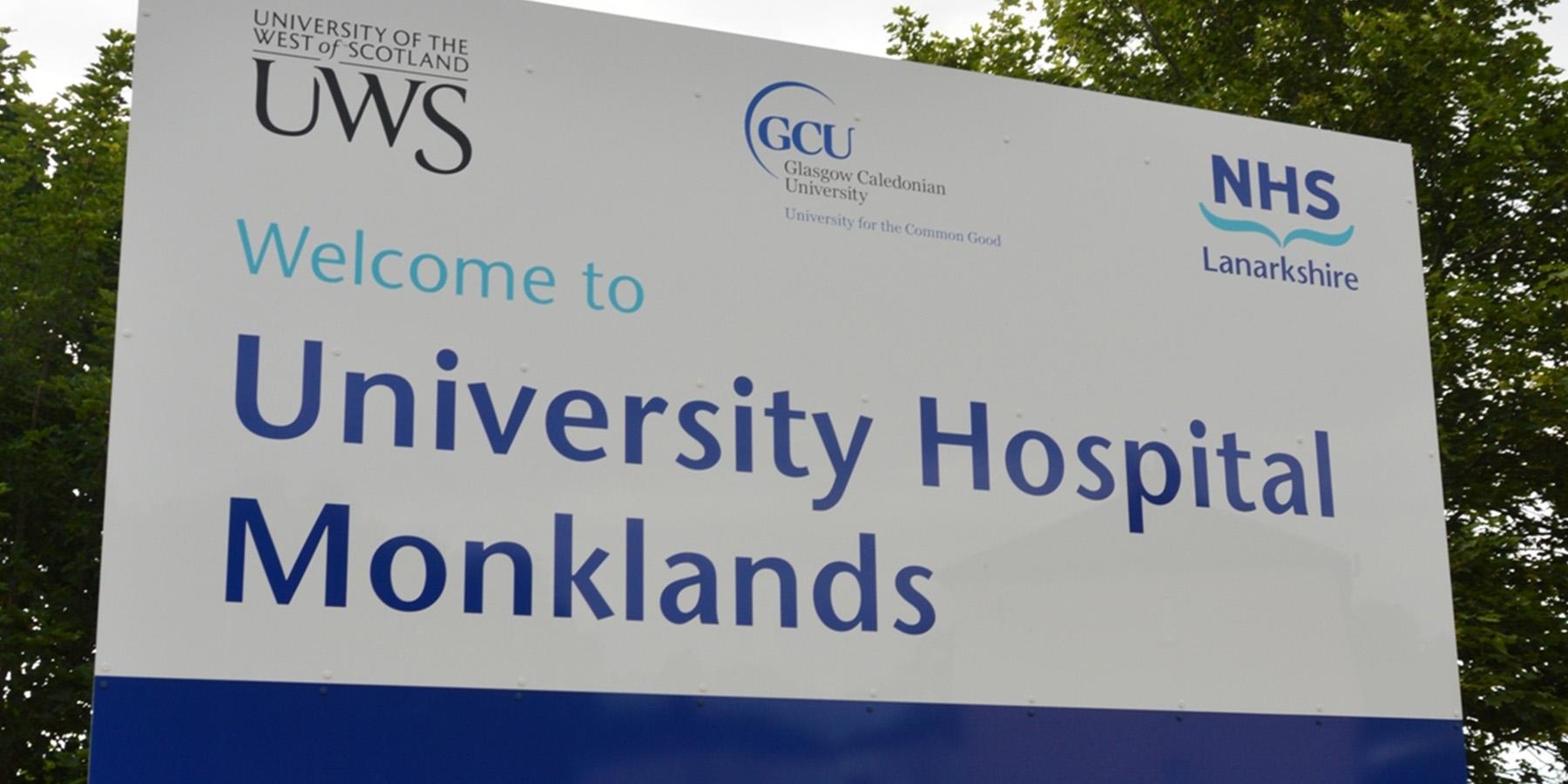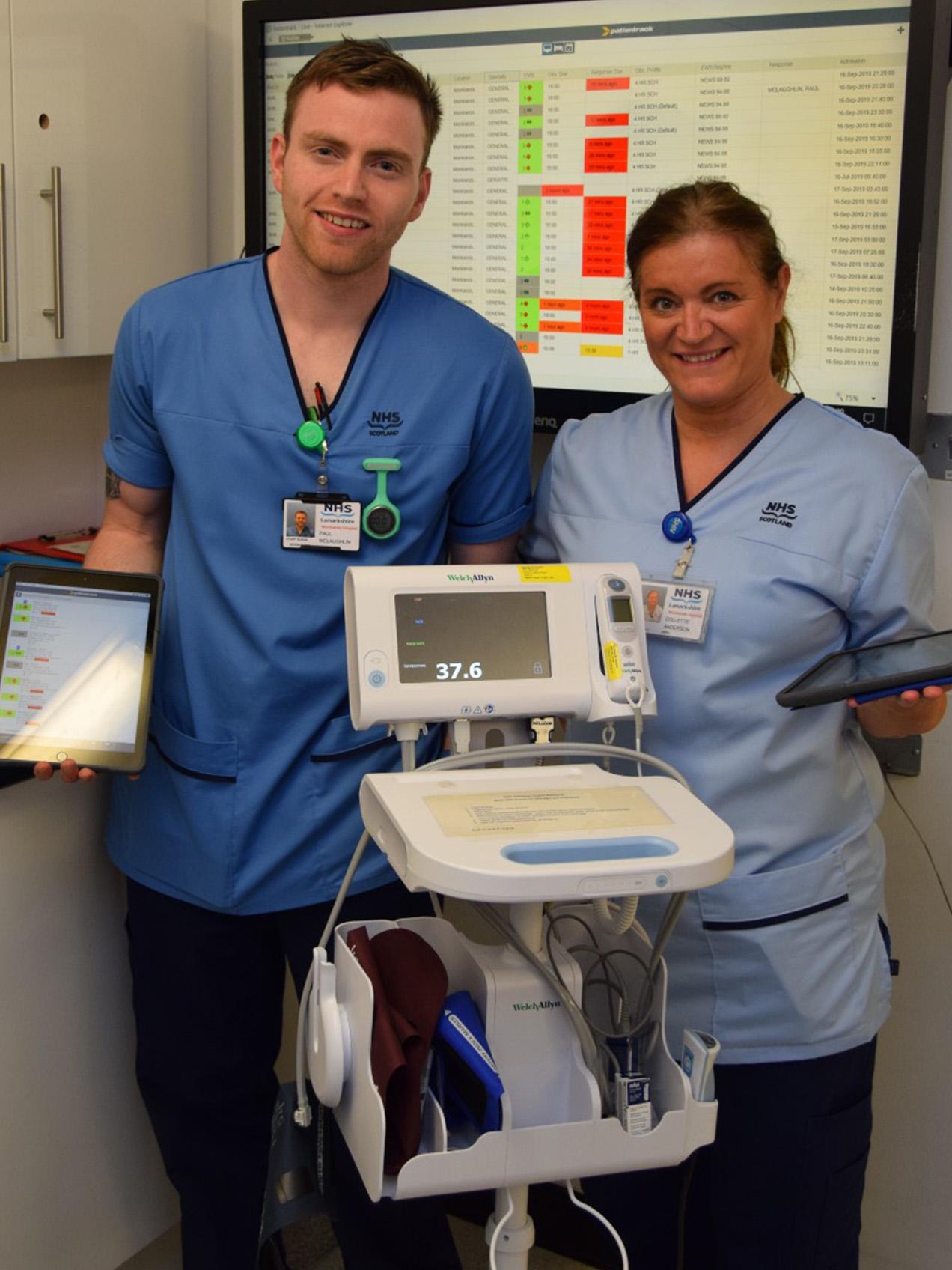How Digital Clinical Observations Can Assist Early Recognition of Patient Deterioration
NHS Lanarkshire is a champion of health-centric digital transformation. With the health board set to open Scotland’s first digital hospital in approximately 2028, the incremental piloting of key technologies is firmly underway. Here we consider how its shift towards electronic recording of digital clinical observations has helped to innovate vital signs recording and thus reduced patient deterioration.
While much of Scotland’s health-centric attentions have been focused on combatting COVID-19 during the pandemic period, the past 18 months have also seen significant steps taken towards achieving the country’s medical innovation ambitions behind the scenes.
NHS Lanarkshire, Scotland’s third largest health board, has been at the very heart of this progress, spearheading plans to develop the country’s first digital hospital in the form of the yet to be constructed University Hospital Monklands building.
Driven by a three-pronged strategy of shifting care away from inpatient treatment to home-based care, developing hospital centres of excellence in the region and supporting the healthcare requirements of Western Scotland, our goal is to help people live longer and healthier lives.
It is an aim underpinned by the provision of high quality, innovative health and social care that is person centred, with the approval of the University Hospital Monklands facility marking a pivotal milestone in its development. Crucially, the facility will be a centre of excellence, championing cutting-edge health technologies. Yet, it will not be a case of simply flicking a switch overnight.
For many of the technologies that will form the backbone of the digital hospital’s operations to work effectively, they will need to be trialled and tested in NHS Lanarkshire’s existing hospitals to ensure suitability, staff familiarity and reliability.
Therefore, while University Hospital Monklands will not be ready until 2028 at the earliest, the health board’s wider digital transformation efforts are already well underway.
Prioritising Early Intervention in Patient Deterioration
There are many aspects of our current systems and processes that we are holistically reviewing, a key example being the targeted improvement of clinical observations to better detect patient deterioration and bolster early intervention.
Current guidelines recommend that patient observations should be conducted every 12 hours as a minimum frequency, achieving the desired frequency1 to the patients clinical need is challenging and in many cases too long in between observations.
Studies have shown that respiratory rate (RR) changes occur roughly six to eight hours before a major event2. If these changes are pre-emptively detected, healthcare professionals will be better placed to proactively address patient deterioration before other parameters begin to show.
Frequency is just one part of the challenge, however. Equally, compliance with vital signs monitoring and recording has historically proven to be inconsistent. During an audit in 2019, we identified a lack of reliability in the paper-based recording of the National Early Warning Score (NEWS). This review was conducted by the Hospital Emergency Care Team (HECT) With busy, noisy wards and healthcare professionals pushed to the limit in terms of capacity, tasks such as data recording can sometimes be pushed down the priority list. We have seen this result in the inaccurate recording of results including inconsistencies in frequency and mathematical accuracy, as well incomplete observations and instances where there was a failure to escalate issues. Critically, ward compliance with our NEWS tool for recording vital signs was shown to be just 31% during the 2019 audit.
In light of this, a pilot study was undertaken in two NHS Lanarkshire medical wards and two surgical wards in order to understand whether a standardised electronic recording system could improve compliance and, in turn, help to deliver safer care by making sure that vital signs and assessment protocols were carried out correctly and consistently.
Hillrom’s (Vital Signs) monitors along with health data platform Patientrack formed the basis of the system, empowering NHS Lanarkshire healthcare professionals to record vital signs data in a seamless, centralised, and consistent manner.
The system allows the recording of all key clinical parameters. These include pulse, respiratory rate, blood pressure, temperature, level of consciousness, oxygen saturation levels and target oxygen saturation levels, as well as mathematical accuracy, the frequency of observations, whether the frequency is correct in the context of the NEWS score, and whether there was recorded evidence of response or escalation for patients.
Digitally Enhanced Clinical Observation
In ascertaining the results of the trial, we asked those staff using the system to share their experiences with the electronic system relating to three key criteria – ease of use, the individual system functions, and electronic NEWS compliance.
Regarding the first, the majority of respondents either agreed or strongly agreed that ease of use was an area of strength, with roughly one third going on to state that they felt the system should be rolled out to the rest of the hospital.
For the system functions, the ability to apply specific flags to a patient record to highlight areas of care or concern were seen as particularly helpful by 66% of respondents, helping to provide a holistic, relevant overview of each patient’s specific needs.
Electronic NEWS compliance for a complete set of observations, meanwhile, drastically improved. Pre-pilot recording of vital signs was just 31%, this rising to 100%3 for the four trial wards during the pilot, with 56,000 electronic observations recorded in total.
Beyond these three criteria, a variety of other benefits were realised from the digital system.
Having a centralised point of reference providing visibility of all patients’ NEWS scores enhanced the sharing of critical information and key insights. Plans for specific patients could be constructed with ease, while Hillrom’s vital signs monitors displayed guidance messages that were linked with NHS.
Lanarkshire’s clinical observation information system, letting a health practitioner know the most appropriate steps of response in respect of the data.
In this sense, the digital system created an in-depth plan of action across the entire hospital that could be both created, edited and communicated in real time, resulting in faster, more informed actions and improved patient outcomes.
Equally, the mean NEWS frequency reliability – showing observations completed on time – was 31% using the pre-pilot paper system compared to 74% for the four wards using Patientrack during the pilot.
The survey also revealed a perceived improvement in patient safety due to the availability of timely and accurate vital signs, which would suggest an increased likelihood of earlier identification of those patients who are deteriorating.
In total, 60% more patients were identified for review during outreach in the pilot compared with the same period in the previous year. Further, there was a 26% reduction in the number of urgent calls to see patients who were deteriorating.
“
Electronic NEWS compliance for a complete set of observations, meanwhile, drastically improved. Pre-pilot recording of vital signs was just 31%, this rising to 100%3 for the four trial wards during the pilot, with 56,000 electronic observations recorded in total.
„
Ambitions for the future
Indeed, the transition to electronic operations across these four wards has not been without its challenges.
The digital system was initially met with some hesitancy and anxiety, with vital signs being recognised as such an important component of patient safety. We began by recording vital signs both via the paper-based methods and the digital system to ease these concerns, but quickly transitioned to only using the latter.
Equally, as we have progressed and staff have gotten up to speed with the system, they have realised the numerous benefits of digital data input, such as this data linking directly with a patient’s clinical observation record.
Key to the success of the initiative was the incremental, limited-scale nature of the change.
Moving forward we will proceed on these same grounds, prioritising further movement away from paper-based assessments to electronic versions in a consistent manner, in order to limit the variety of different systems that our staff will be required to use. In doing so, we hope to be able to enhance assessment efficiency, freeing up our staff to spend more face-to-face time with patients.
This is not the only aim, however. In the longer term we hope to champion access to consistent data across the entire NHS Lanarkshire Trust.
Currently there is a heavy reliance on the manual sharing of information between health professionals situated at different practices. We will be looking to change this through the development of a central health command centre where all health professionals will gain holistic oversight of patient information and data.
This is vitally important. Not only will it make the health professionals lives easier, but it will also enhance patient care, showing all history and informing actions such as possible areas of concern for potential patient deterioration and if they need to be tracked post-discharge.
Alongside the University Hospital Monklands building, this command centre will form a key part of our digital ambitions for the future allowing an overview of real-time acuity for the site.
Keep informed of new content by subscribing to our Learning Series



